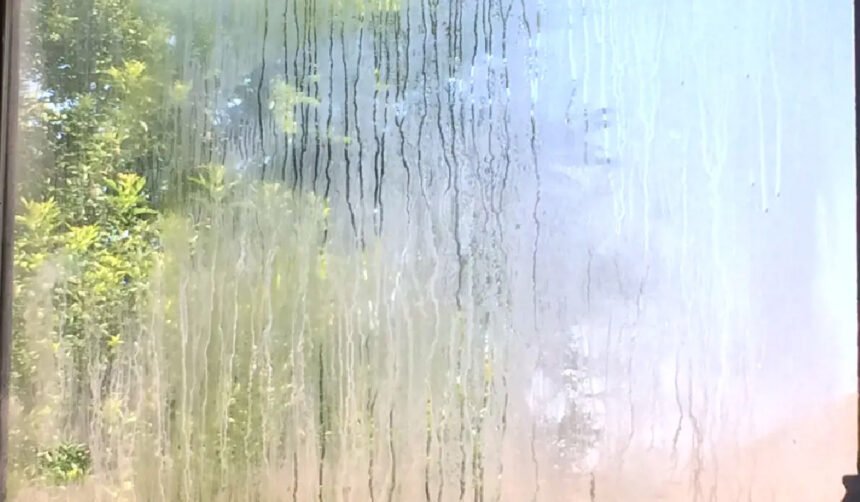Windows are essential components of any building—they connect indoor spaces with the outside world, allow natural light to enter, and offer insulation from the elements. However, over time, you might notice a frustrating issue: windows that look cloudy, hazy, or appear to have condensation trapped inside them. This isn’t just a cosmetic issue—it’s a sign of deeper problems with the window’s structure and insulation. In such cases, one of the most effective solutions is foggy window glass replacement.
This article will explore why windows become foggy, the potential solutions, how replacement works, and why choosing the right approach can make a long-term difference in comfort, energy savings, and home value.
What Causes Windows to Become Foggy?
To understand why window glass becomes foggy, it’s important to first understand how modern windows are constructed. Most homes and buildings today use insulated glass units (IGUs)—also known as double-pane or triple-pane windows. These units consist of two or more layers of glass with a sealed space in between, typically filled with air or an inert gas like argon or krypton. The purpose of this sealed space is to provide insulation and reduce heat transfer.
Over time, the seal around the glass panes can degrade due to:
- Age and weather exposure: UV rays, fluctuating temperatures, and general wear and tear can break down the sealant.
- Poor installation: If windows weren’t installed correctly, seal failure can happen prematurely.
- Pressure changes: Changes in air pressure, particularly in high altitudes or during extreme weather, can compromise seals.
- Moisture penetration: Once the seal is broken, moisture enters the space between the panes, leading to fogginess and visible condensation.
Unlike simple condensation on the exterior of a window, which can be wiped away, this foggy appearance is trapped between panes and cannot be cleaned off. At this point, foggy window glass replacement often becomes necessary.
The Problem with Ignoring Foggy Windows
Many homeowners initially ignore foggy windows because they don’t seem like an urgent issue. After all, they still let in light and provide basic coverage. However, there are several reasons not to delay addressing this problem:
- Energy Efficiency Loss: A broken seal reduces the insulating effectiveness of the window, leading to higher heating and cooling costs.
- Reduced Visibility and Aesthetic Appeal: Foggy windows can obstruct views and make your home look neglected from both the inside and the outside.
- Potential for Mold Growth: Moisture trapped inside windows may eventually lead to mold or mildew, affecting air quality.
- Lower Property Value: Homes with visibly foggy or damaged windows can be perceived as poorly maintained, affecting resale value.
For long-term benefits and improved home performance, addressing the issue through foggy window glass replacement is usually the best route.
Is Repair an Option?
There are repair services that claim to “defog” windows. These services often involve drilling tiny holes into the glass, removing moisture, and then sealing it up again. Some even add drying agents or anti-fog solutions. While this might work temporarily, it doesn’t restore the original insulation properties of the IGU and can void any existing warranties on your window units.
Moreover, defogging is not always permanent. Moisture can re-enter the unit over time, and the clarity may diminish again. This makes the method less reliable than a full foggy window glass replacement in Silver Spring, especially when long-term results and energy savings are a priority.
How Does Foggy Window Glass Replacement Work?
If you decide to replace your foggy glass, the process is usually straightforward—especially when handled by professionals.
1. Assessment and Measurement
The first step is to assess the existing window frame and glass. A professional will measure the dimensions of the glass pane (not the whole window) to ensure a perfect fit. If the frame is in good condition, only the glass is replaced—not the entire window unit.
2. Ordering the Replacement Glass
The new insulated glass unit is custom-manufactured to match your window’s size and features. This includes options like low-emissivity (Low-E) coatings, gas fills, tinting, and more.
3. Glass Removal
The old foggy glass is removed carefully without damaging the surrounding frame. In some cases, glazing beads or stops are taken out to free the glass from the sash.
4. Installation of New Glass
The new glass is fitted into the existing frame, and proper sealants and weather stripping are applied to ensure a tight seal and optimal insulation.
5. Clean-Up and Inspection
Once installed, the area is cleaned, and the window is inspected for proper operation and appearance.
This approach saves time, money, and waste, especially when compared to full window replacement, which involves removing the frame, trim, and surrounding wall materials.
Choosing the Right Glass and Features
When undergoing a foggy window glass replacement, it’s a good opportunity to upgrade the features of your windows for better performance. Options include:
- Low-E Coatings: Helps reflect heat and UV rays while allowing natural light to pass through.
- Gas Fills: Argon or krypton gases improve insulation between panes.
- Tempered or Laminated Glass: Offers better safety and noise reduction.
- Tinted Glass: Reduces glare and solar heat gain.
- Triple-Pane Glass: Adds another layer for superior energy efficiency, especially in extreme climates.
Choosing the right type of glass can enhance your home’s energy efficiency, reduce utility bills, and improve indoor comfort year-round.
Cost Considerations
The cost of foggy window glass replacement depends on several factors:
- Size of the Window: Larger windows require more material and labor.
- Glass Type and Features: Upgrades like Low-E, gas fills, or laminated glass increase cost.
- Number of Units Being Replaced: Multiple replacements may qualify for bulk pricing.
- Labor Costs: Vary depending on the complexity of the job and your region.
On average, replacing a single glass pane (not the entire window) can cost anywhere from $150 to $400 or more, depending on the features you choose. This is often more affordable than full window replacement, which can cost upwards of $600 to $1,000 per unit.
Despite the initial investment, the return comes in the form of lower energy bills, improved comfort, and a boost in property value.
DIY vs. Professional Replacement
Some homeowners consider replacing foggy window glass themselves. While this is possible for those with experience in glass handling and carpentry, it’s not generally recommended due to several reasons:
- Safety Risks: Handling large panes of glass can lead to injury if not done properly.
- Seal Integrity: Proper sealing is critical for insulation and durability. Mistakes can result in further fogging or leaks.
- Voided Warranties: Improper installation can void manufacturer warranties.
- Time and Tools: Requires specific tools and time investment.
Professional glass technicians have the experience and equipment to perform clean, safe, and long-lasting installations. In most cases, hiring a pro is the better choice for peace of mind.
Long-Term Benefits of Glass Replacement
Investing in foggy window glass replacement isn’t just about solving a visibility issue—it brings multiple long-term advantages:
- Energy Savings: Modern glass technologies significantly reduce heating and cooling costs.
- Home Comfort: Better insulation means more stable indoor temperatures and fewer drafts.
- Noise Reduction: Insulated glass can block more outside noise.
- Curb Appeal: Crystal-clear windows dramatically enhance a home’s appearance.
- Sustainability: New windows often come with eco-friendly materials and better energy ratings.
These benefits can last for decades if high-quality materials are used and installation is done properly.
Conclusion
Foggy windows may seem like a minor issue, but they are often a sign of a broken seal and reduced performance. While defogging services offer short-term relief, the most reliable and effective solution is full foggy window glass replacement. This process restores clarity, improves energy efficiency, and enhances the comfort and appearance of your home.
By understanding the causes, replacement process, and available options, homeowners can make informed decisions that will benefit their living space for years to come. Whether you’re dealing with one foggy pane or several throughout your property, taking action today can save you money, prevent further damage, and improve your overall quality of life.
For More Information, Visit Dotmagazine









